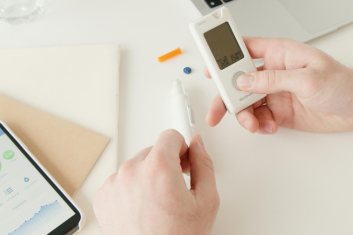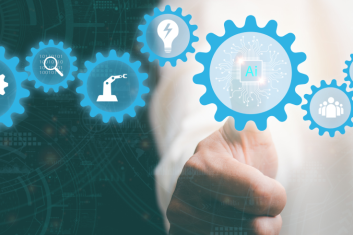Current problems in agriculture
The Internet of Things represents a smarter way of organizing many spheres of our lives. Data-driven technology and automation bring total control over the processes that go on in production facilities, hospitals, offices, schools, and our homes.
But there is one sphere sometimes overlooked when we are talking about IoT — agriculture. Let’s see how technology helps farmers refine the production process while ensuring top quality.
Agriculture Is Struggling With Food Supply
This planet’s resources are not infinite. With the world population continuing to grow, food production globally may struggle to keep pace with demand.
According to The Guardian, back in 2011, the UN Food and Agriculture Organization concluded that farmers would have to produce 70% more food by 2050 to meet the needs of a growing population.
With time, soil used for agriculture becomes degraded and less productive for future crops. Farmers need to be cautious about using their resources effectively and sustainably.
Producers must find ways to use their fields, greenhouses and pasture lands in a way that maintains high quality and high yield while ensuring that future food production capability is protected. Advanced Internet of Things technology can help.
Smart Farming Is the Answer
Agriculture today is adopting the Internet of Things technology to help cut costs, boost production efficiency, and figure out ways of using less to get more.
As Dairy Global states, more than 2 million farms are expected to be IoT connected by 2024. But what does the “connected farm” actually mean?
A Connected, or Smart, Farm is a farm managed with modern Information and communication technologies for the sake of increasing quantity and quality of products and optimizing the production process.
A fully equipped Smart Farm is expected to have the following set of technologies:
- Sensors: devices that track soil quality, temperature, water, pressure, and humidity;
- Software: solutions that are used to run the smart farm;
- Connectivity: cellular, LoRa (long-range wide-area network), etc.
- Location: with the help of GPS, farmers can track the location of their equipment, livestock, or packaged products;
- Robotics: modernized tractors, completely autonomous processing equipment;
- Data analytics: various types of analytics present data collected from IoT devices, analyze it, and participate in strategic decision-making.
Now let’s take a look at what benefits smart farms bring.
The benefits of smart farming: how’s IoT shaping agriculture
Benefits gained from smart farming using IoT are countless, but we will try to make a list of the top 5 most important ones.
- Increased production. IoT in agriculture allows for optimized crop treatment plans, including accurate planting, watering, and fertilizing. Such advanced care increases harvesting directly.
- Saved water. Sensors used in IoT in agriculture allow to precisely analyze how much water is required to keep an optimal moisture level in the soil. Then, plants are watered only when it is really required.
- Lower operation costs. IoT allows to automate many routine processes and not involve human labor. Automated planting, harvesting, and treatment greatly reduce resource consumption and cut costs.
- Better production quality. IoT solutions analyze treatment plans in correlation to production quality and provide insights into how the whole process could be enhanced. Thus, the quality of production is increased as well.
- Reduced footprint. As you know, farming leaves a huge footprint on the environment, and IoT can help to reduce it. With IoT, farmers can control and reduce water usage as well as increase production per land unit, which will directly enhance the environmental status of the farm.
But how exactly do smart farms work to provide all these benefits?
See below.
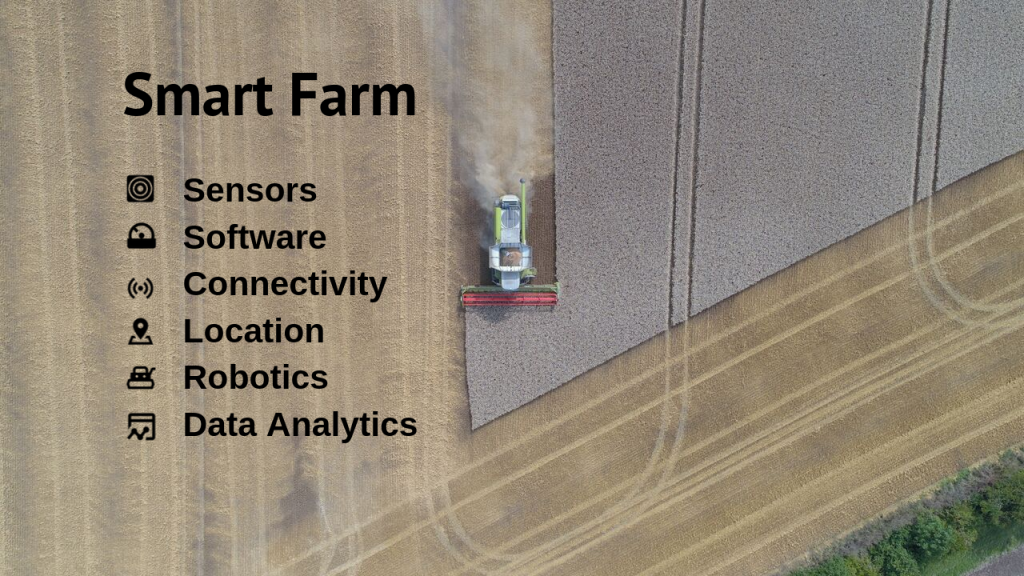
The Smart Farm Work Cycle
On the surface, a Smart Farm operates just like any other farm. But inside, there’s more advanced stuff happening. The workflow involves a cycle of collecting, processing and acting on data.
IoT-powered devices collect data that was previously inaccessible to farmers, allowing them to work more precisely, make better decisions, and have a clear picture of everything happening on the farm.
The IoT-enabled farming cycle goes like this:
Observation
The first step involves using IoT tech to gather a vast range of data from various sources, such as the soil, crops, livestock, or the atmosphere.
Everything that might have an impact on the farm is tracked: temperature, acidity, pressure, humidity, cattle location, equipment condition, CO2 levels, etc.
Diagnostics
Next, the data is analyzed. Four types of data analytics are applied to the data to identify trends and patterns and help find the root of any issue;
Decision-making
Based on data analysis from the previous step, the IoT system uses Artificial Intelligence and Machine Learning to come up with the best solution to a problem.
Or, more simply, the IoT software presents analyzed data to the farmer and they decide how to address the issue;
Implementation
Having gathered detailed information about the issue, its nature, and ways to resolve it, suitable measures are taken to solve the problem and boost overall farm efficiency.
To get a better idea of how the cycle works, imagine the following situation.
The farmer is having trouble with poor crop yields. To understand the issue, the farmer uses IoT sensors to study the soil.
The data from the sensors is analyzed, and the system concludes the soil is not suitable for particular types of crops. The system then studies the various fields and determines which offer the best conditions for each potential crop.

Application of IoT in Agriculture
Here’s a more detailed look at where the Internet of Things can be applied in agriculture to bring the most value to farmers.
When it comes to agriculture, we can review the implementation of IoT solutions from two perspectives:
- Precision farming — precision farming aims at figuring out the best ways to make farming decisions in a way that is controlled, effective and accurate;
- Farming automation — the purpose of automation is to minimize human participation in labor, leaving the hardest work to machines.
Precision Farming
Smart-farming solutions that can help farmers make the most of their resources include various sensors, wearables, drones, and IoT-enabled tractors and harvesters.
Dmitry Sokolovski
Project Manager
at HQSoftwareWe have developed an IoT software solution for real-time soil composition analysis. Raspberry Pi based sensors were gathering data from soil: structure, acid levels, chemical composition — 35 parametres in total. The Android application aggregated the information from nearly 2 million data points daily. The data was presented right on the field interactive map, making it very easy to study. Using the info on soil analysis, the farmers were able to find the best-fitting condition for particular types of crops.
Using connected smart machines, farmers can gain valuable insights into every process involved in crop production and track their progress. Large amounts of data gathered through IoT allow farmers to study various factors and apply new approaches to production.
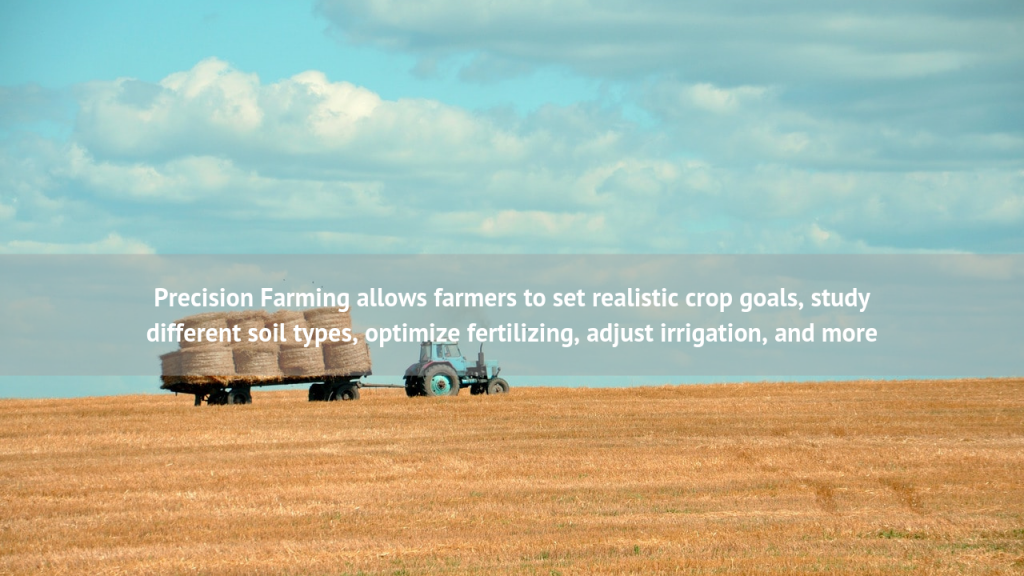
Precision Livestock Farming
Cattle ranching can also be optimized with IoT technologies. Internet of Things devices allow each animal to be monitored and tracked individually, for health conditions as well as location.
To optimize beef production, the farmer can adjust the nutrition of each animal individually, as well as monitor the well-being of the animals and identify potential disease outbreaks.
This will help by allowing sick animals to be separated from the herd before the problem has a chance to spread, so as to treat the animal before its condition worsens. This helps farmers cut expenses on vets and regular checkups.
Want to build an agricultural IoT solution?
Our professional development team is ready to build your project.
Julia Tuskal
Head of Sales
at HQSoftware
Farming Automation
When it comes to automating workflows around the farm, farmers can use a number of devices to their advantage. For instance, automated greenhouses offer precision control of the interior climate, keeping conditions optimal for particular crops.
Smart greenhouses
On top of that, the conditions can easily be changed to suit different crops. Farmers can control lighting, irrigation, humidity, temperature and more, to get the best yield without wasting resources. This means, among other things, not wasting energy and thereby reducing greenhouse gas emissions.
German farmers, for example, have been stepping into IoT-driven agriculture, upgrading their greenhouses. Those who use these systems have found they save between 25 and 80 percent of the energy otherwise required to run the greenhouses.
Agricultural drones
When farming open fields, agricultural drones can be of help. Controlled remotely, drones can be used to monitor crop growth, spray fertilizers, perform soil analysis, and track a wide range of other metrics, gathering useful information that can be used to optimize farming.
Droneseed is one of the companies that provide agricultural drones used for tree planting, irrigation, and fertilizer-spraying.
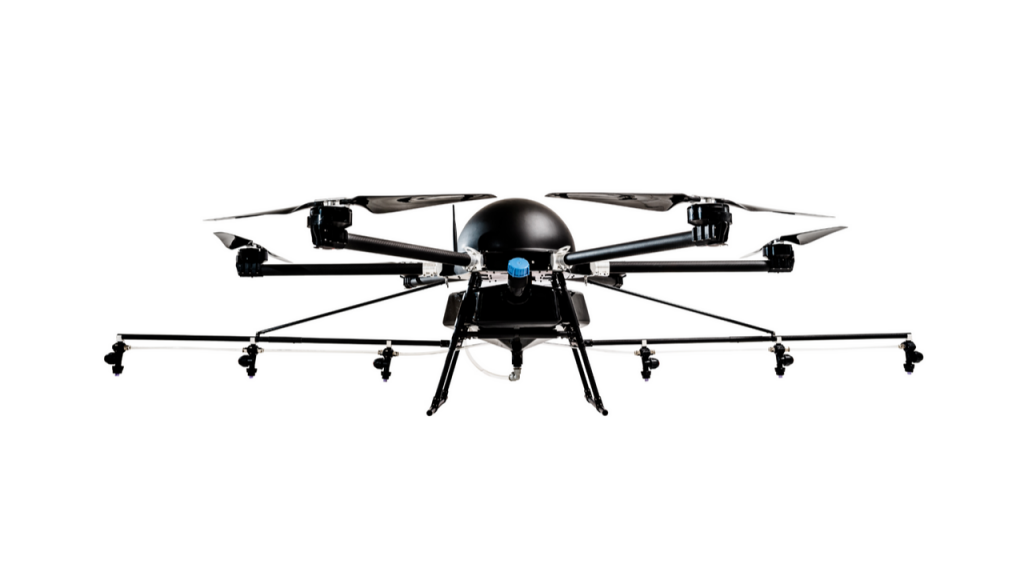
The drone model provided by Droneseed
Automated cattle management
Dairy operations also rely on automation. Automated milking equipment can increase profits while reducing milking times and therefore give a boost to the well-being of the animals.
Europe Dairy Systems is one of the distributors of IoT milking devices, cattle feeding equipment, and health monitoring solutions. As the company’s CEO, Rutger Schut, reports, this technology is able to reduce milking time by 20% to 30%. Less milking time means better health for the animal and makes life easier for farmers who struggle to find skilled workers in the milking parlor.
Smart Farming 101
IoT agriculture projects have what it takes to provide productive, accurate and precise information that helps farmers ensure consistent yields and sustainable production. IoT applications in agriculture are a conscious solution to the emerging global food crisis, hitting all points: producing high-yield, high-quality products while decreasing the negative human impact on nature.

Lead Software Engineer
An experienced developer with a passion for IoT. Having participated in more than 20 Internet of Things projects, shares tips and tricks on connected software development.
FAQ
How can IoT be used in farming?
What are the examples of IoT in agriculture?
How does IoT impact the future of farming?
Related Posts
View All
We are open to seeing your business needs and determining the best solution. Complete this form, and receive a free personalized proposal from your dedicated manager.

Sergei Vardomatski
Founder





